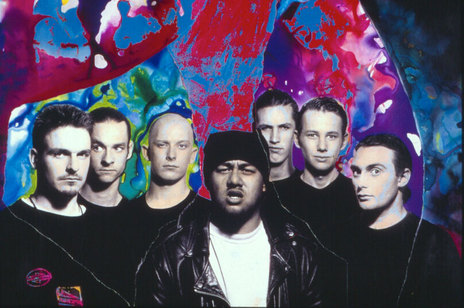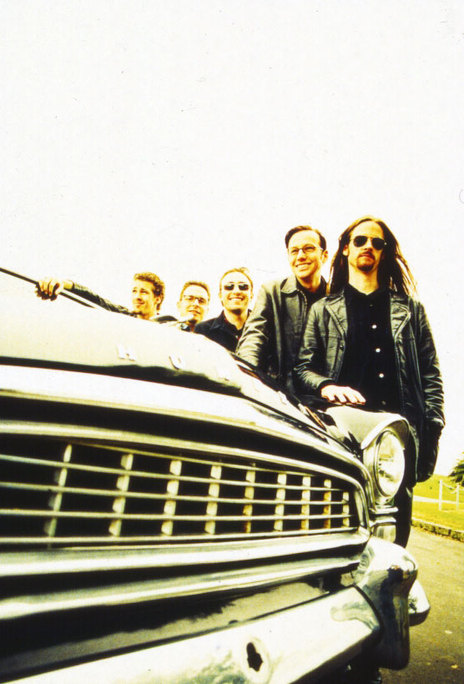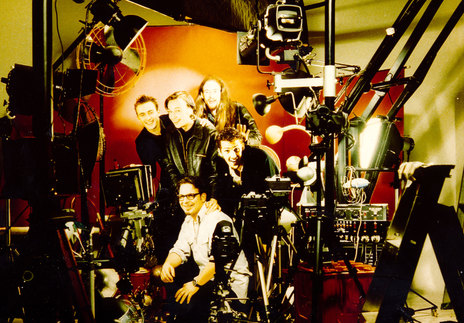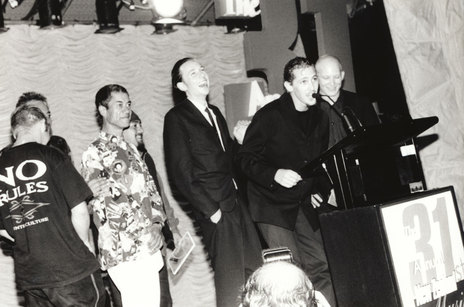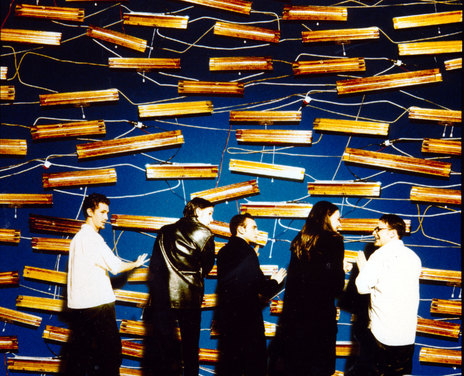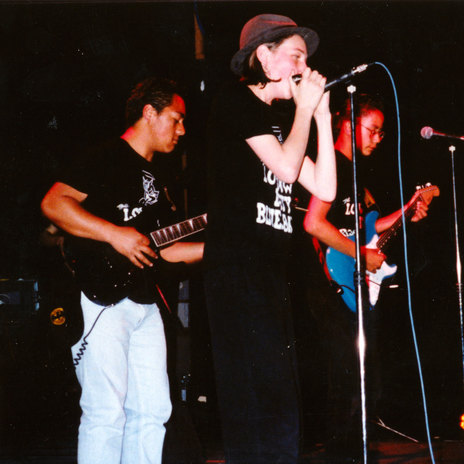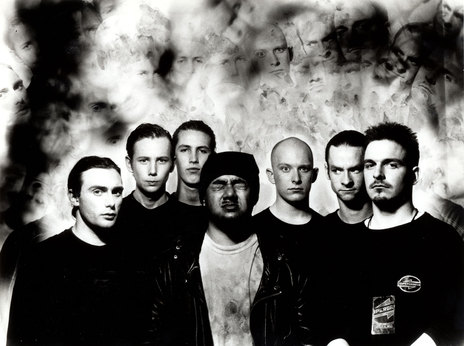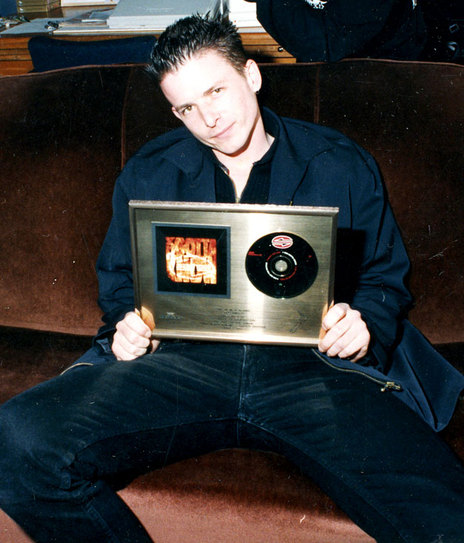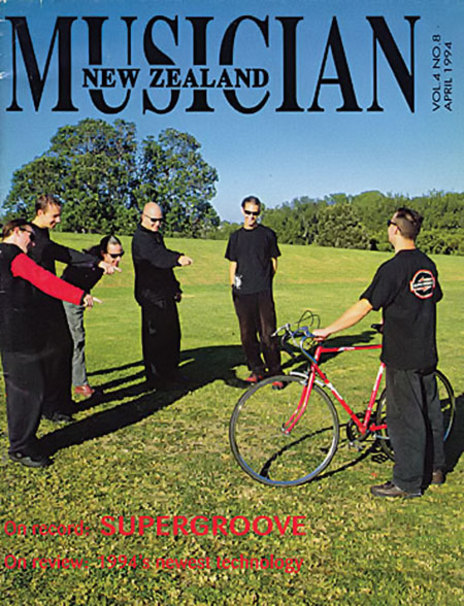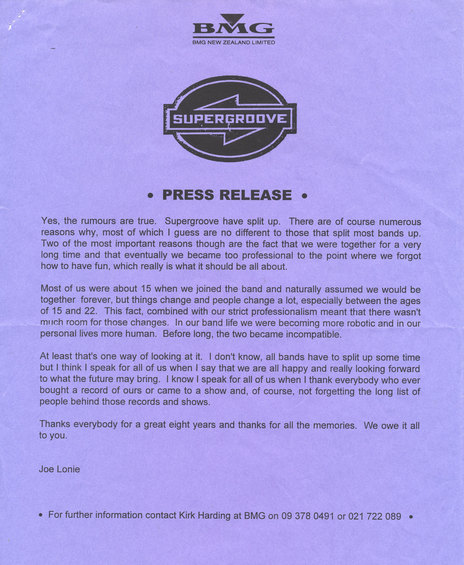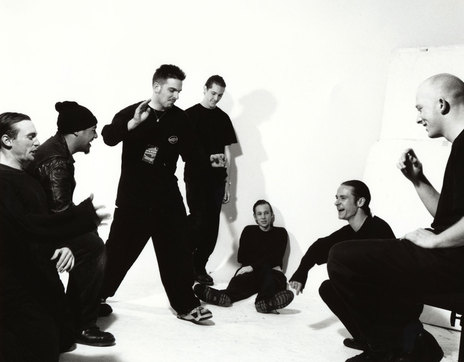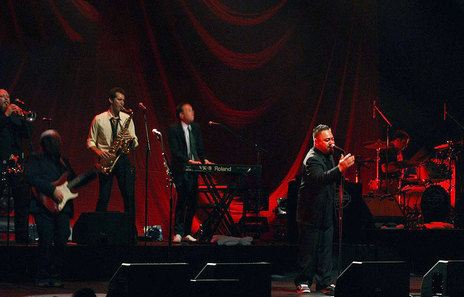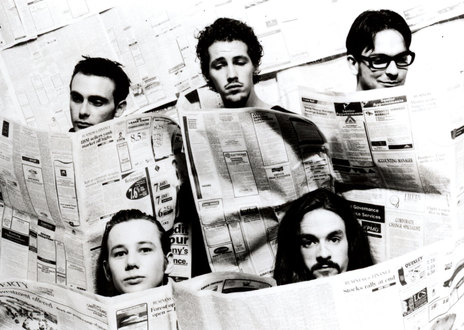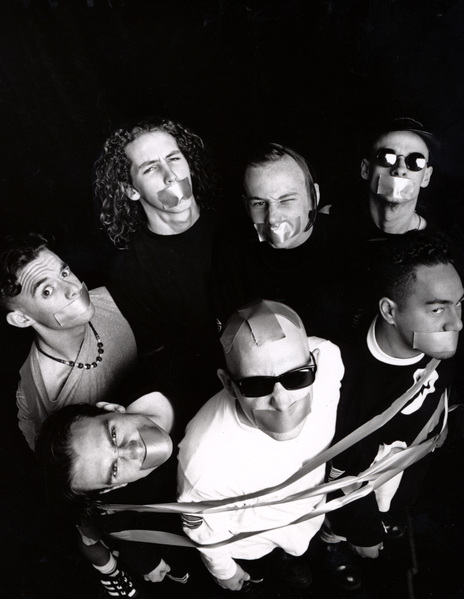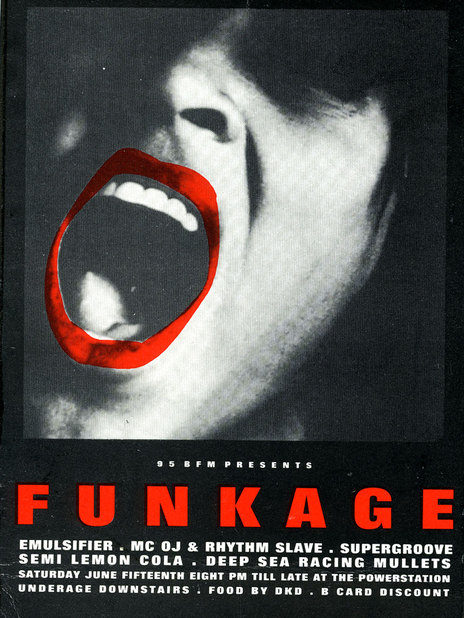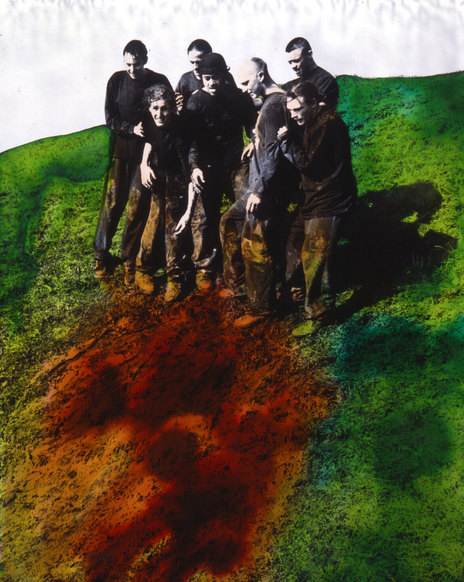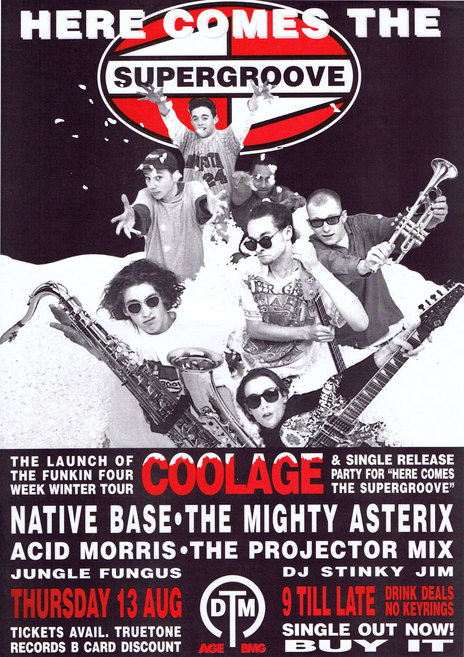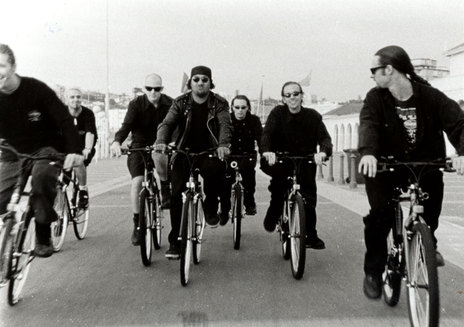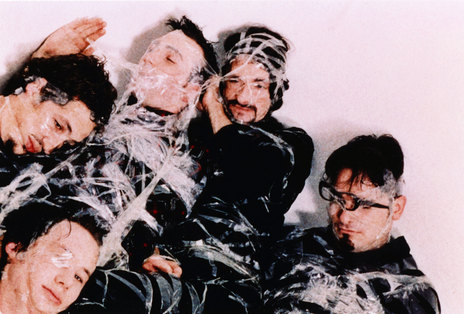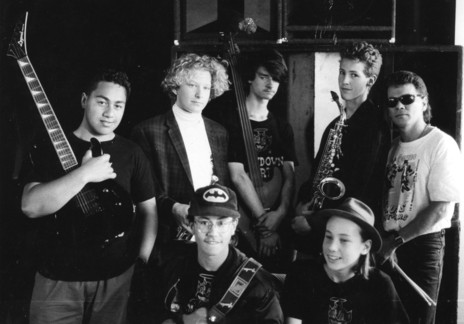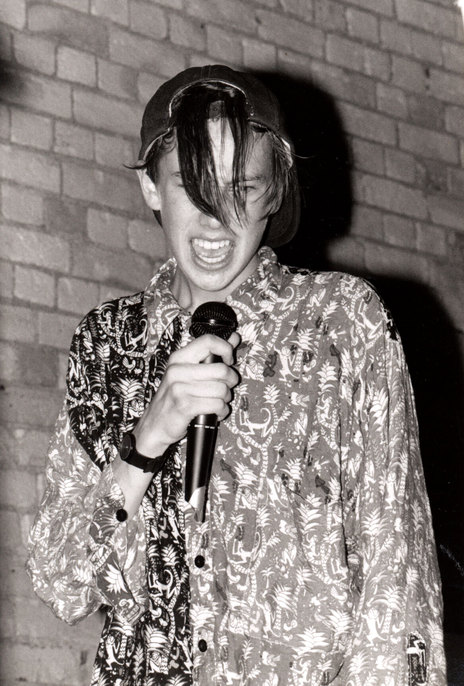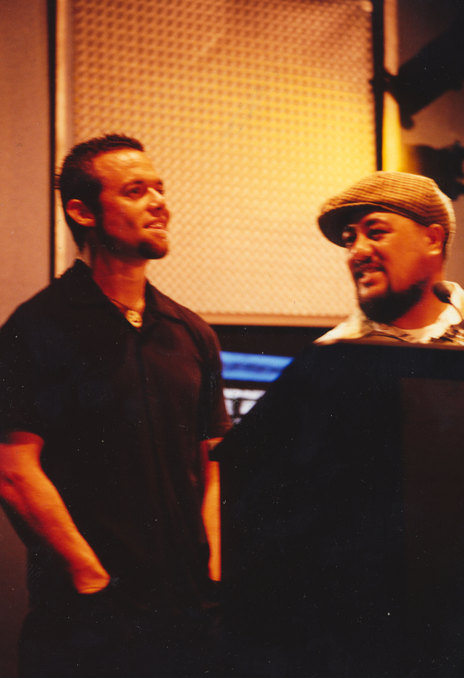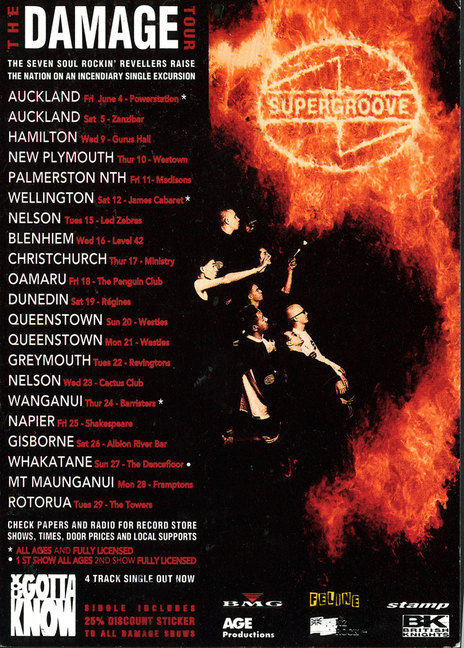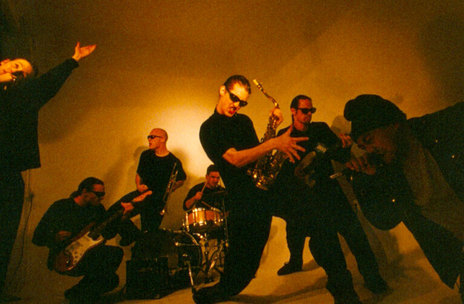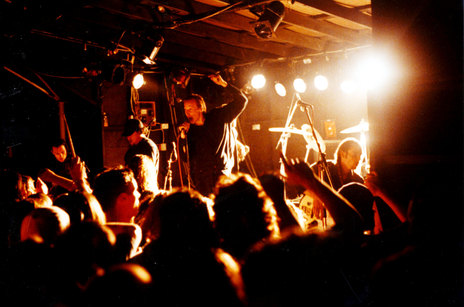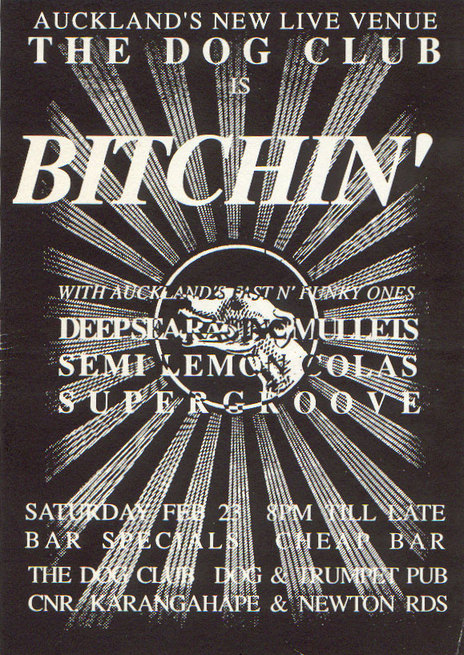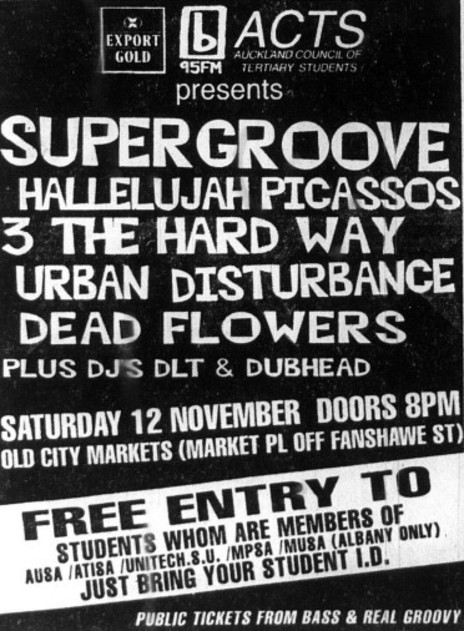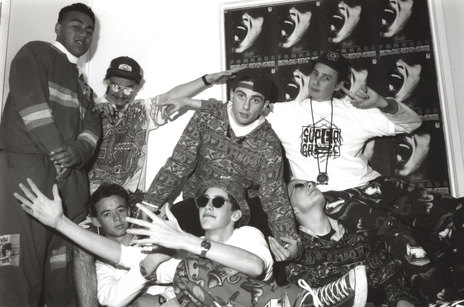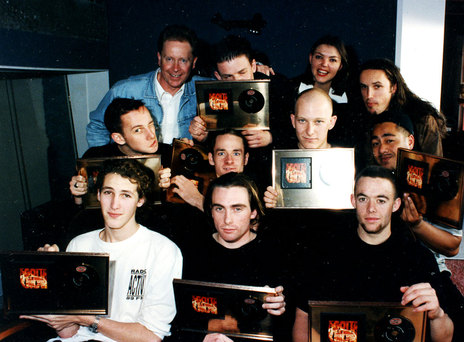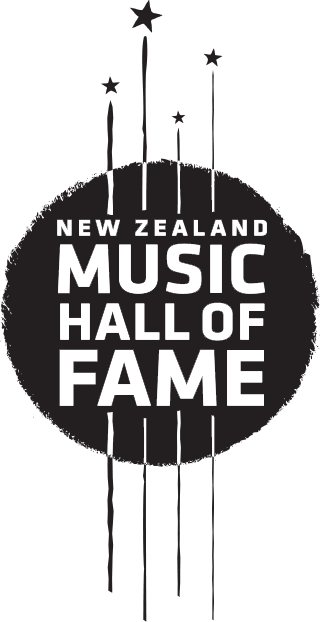Supergroove became an international priority for their record label, BMG, and undertook an extensive world tour. But when the tide went out on modern funk, the band attempted an abrupt change in direction that saw band members dropped and one that left their fans feeling Che-ated. Another moderately successful album followed, but a declining enthusiasm for the music industry finally saw the end of the group. It wasn’t until a set of reunion shows in the new millennium that bridges were finally mended and the story of the band given the happy ending it deserved.
In 2014 Supergroove were inducted into the New Zealand Music Hall Of Fame.
Lowdown dirty blues
Karl Steven was only 13 when he was inspired by repeat viewings of The Blues Brothers to form his own band, with himself as the harmonica player. He’d already tried some half-hearted attempts to record hip-hop (using a clunky early drum machine) with his friend Tim Stewart and so he asked him to join him in this new endeavour.
Both originally attended Seddon College in Western Springs, Auckland, but moved to Selwyn College because of its strong musical programme. It was here they met Nick Atkinson, and came up with the name “Little Boy Blues". Tim played trumpet (inspired by the horns on the cover of ‘A Message To You, Rudy’ by the Specials) while Atkinson played sax. Not the best line-up for a blues group, so they gradually enlisted other players and changed their name to The Lowdown Dirty Blues Band.
Another recent émigré from Seddon to Selwyn was Ned Ngatae (AKA Killamanraro) who joined on guitar and convinced his friend, Che Ness [later Che Fu], to add his soulful singing voice to the mix. The line-up was completed by Joe Lonie (then called Joe Fisher) on bass and Paul Russell on drums.
The novelty of such a young group meant that they were soon getting gigs at Java Jive jazz café in Ponsonby and playing support for Midge Marsden at the Powerstation, though Ngatae soon lost interest and was replaced by Stewart’s school friend, Ben Sciascia.
Supergroove arrived with a sound that was funky, heavy, and always energetic.
We got the funk
The limitations of 12-bar blues gradually dawned on the members of the group, especially since their knowledge of the musical style relied mostly on the Blues Show that played on bFM on Sunday mornings. They steadily began introducing more soul-based tunes into their sets and adding heavier guitar when they played at more youthful venues. Their shared love of early hip-hop (Run DMC, Beastie Boys, etc) meant that their gradual move towards funk was probably inevitable and they marked their new sound with a change in name. Supergroove arrived with a sound that was funky, heavy, and always energetic.
The band was formed on New Year’s Eve 1989/90 when the band members were still at high school. While their peers were going on dates to the movies, they were playing at bars across the cities and putting on their own all-ages shows. They didn’t just attend their own ball, but played at the balls held by other schools.
Steven was so serious about making a career in music that he quit school in sixth form and went to work at Mandrill studios with experienced producer Glyn Tucker. It was here that Steven first met producer Malcolm Welsford, who would work alongside him on all of Supergroove’s subsequent releases. The other creative force behind the band was Joe Lonie, who combined with Steven to write all of the group’s compositions and who also created the majority of their music videos.
Management and signing
Supergroove’s progress was helped considerably by the high aspirations of their manager, Stuart Broughton. He’d previously worked as sales manager of Monitor magazine (a publication started by bFM) and successfully ran a venue, The Dog Club, so he had some experience of the local music industry and how to promote a band.
It was all very well being a cult high school band, but Broughton wanted them to be world famous. Fortunately he knew someone working in promotions at BMG – Kirk Harding had previously worked at Marbecks where Broughton turned up regularly with Supergroove gig posters. He convinced Harding to attend one of Supergroove’s all-ages shows at Ellen Melville Hall.
Harding remembers: “I never would’ve known about them without Stuart. When I turned up at the show, it was like they’d created their own world. They had colour-themed clothes and a logo above the stage. I’d never seen a local act with something so complete as what they had going. They had a vision and Stuart was a huge part of that.”
Harding managed to convince BMG’s managing director, Morrie Smith, that BMG should work with the band, though they were cautious at first and only put out successive singles by the group, rather than a full album. Supergroove’s first release was ‘Here Comes The Supergroove’ in August 1992, which was almost cartoonish (‘here comes the supergroove, the super-duper-groove’ etc), but which still managed to reach No. 21 on the charts. Steven’s frenetic, high-pitched vocals were offset by Ness’ low baritone singing, while Sciascia’s fuzzed-out wah-wah guitar was juxtaposed with bursts of brass and some virtuoso playing by the rhythm section – thus setting the template for their subsequent singles.
They supported their follow-up single ‘You Gotta Know’ with an ambitious national tour that involved playing up to three shows a day.
They supported their follow-up single ‘You Gotta Know’ with an ambitious national tour that involved playing up to three shows a day, including in-stores and all-ages events in each town.
The success of this track made Broughton decide that it was time to formalise his role as manager, as he later explained to the bFM historical society: “After 'You Gotta Know' went gold, I thought I've got to get a contract with the band. That's where it all went bad. I got a lawyer and he talked to them, then ... it all just blew up. I basically ended up staying on, without any executive control ... I stayed until they broke up and I was happy when it finally ended.”
Supergroove’s third single, ‘Scorpio Girls’ also hit the top five and Steven and Lonie had something even more catchy planned for their next one, ‘Can’t Get Enough’. It was a track that was just hook after hook, without even a nodding attempt at meaningful lyrical content, and it was combined with a video that packed every frame with a similar sense of youthful enthusiasm.
Getting Traction
The result was a No.1 hit and when Supergroove’s debut album Traction finally arrived in stores in 1994, it shipped platinum in its first week. The early tracks might’ve seemed light and playful, but the band showed a bit more heft on their final single off the album, ‘Sitting Inside My Head’. The distorted horns sounded almost industrial in the chorus riff, while Ness simply took off when given the central vocal to himself. They also did a video for another album track, ‘You Freak Me’, which was an equally heavy vehicle for Ness’s vocals. Supergroove were now the most successful band in the country.
Somehow, in the midst of all this, Steven still found time out to keep up with his production work. Traction had been recorded by Malcolm Welsford at his new studio, York Street, and Steven kept up his skills by continuing to work there when the chance arose, doing a lot of work on documentary and television show soundtracks and even taking on the job of mastering Shihad’s first album, Churn (1993).
During the national tour to promote Traction, Paul Russell decided that his Christian beliefs didn’t fit well with the band lifestyle or the music that they were making. He left the group and entered in the Christian rock scene, touring overseas with a Youth For Christ group and eventually forming Eight. Losing Russell was a troublesome development, given that he was a very gifted musician, as Tim Stewart remembers: “Paul used to annoy Joe by picking up his bass at breaks during practice and then playing Joe’s parts perfectly.”
crowd noise at the gig was so loud and enthusiastic that it began feeding back through the PA.
Fortunately, BMG had arranged to have one of their international conferences in Rotorua, so Harding arranged for all the delegates to see Supergroove play nearby and the crowd noise at the gig was so loud and enthusiastic that it began feeding back through the PA. Harding also ensured that the label’s Australian representatives saw them play when the band headed across the Tasman to play the Big Day Out music festival.
This eventually led to the group being listed as one of the artists on BMG’s “long-term development list” (along with English boy band, Take That, and US dad-rock act, Dave Matthews Band). Their next release, the Tractor EP (1994), gave them another top five chart placing and was promoted through the track ‘Next Time’, showing again that Lonie and Steven were more than capable of writing a booming funk track that provided ample canvas for Ness’ vocals to shine.
World tour
Supergroove left New Zealand in April 1995 for a massive world tour. They started in Asia, doing a free show in Bombay (now Mumbai) to a crowd of 4,000 and then were shuttled around Indonesia with an armed escort. Traction subsequently went gold in Indonesia, selling 35,000 copies. They followed this with an extensive tour through the UK and Europe.
In September, BMG put them up in a farmhouse in the small town of Hancroft (in Sussex) for a month so they could work on material for their next album. The fusion of rock, funk and hip-hop which had made them famous was now starting to seem like a tiny box to work within. Every new rock band over the past few years seemed to have slap bass, distorted guitar, and a singer that yelled out lines of rap rather than sang. The regular points of comparison began to grate, especially when they saw the Japanese pressing of Traction and found the only English words on the promo sticker were “Red Hot Chili Peppers” and “Living Colour.”
Meanwhile Steven and Lonie had always had a broader interest in music, with one shared influence being the music that emerged out of CBGBs in New York during the 70s (a venue they later got to play) and so they wanted to sound like Television, Blondie and Talking Heads rather then continuing in the same direction. The resulting tracks they wrote sounded peculiar when delivered by Ness and it seemed superfluous to add horn lines to these tracks.
There was no time to solve the issue though, since the band were sent straight back out on the road until Christmas, doing another stint through Europe before heading on to the USA. Overall, it was a harrowing year of touring, conducted with little spending money for food or luxuries, though the band were still young enough to find their fun where they could. It was only when they returned home that things finally came to a head.
Divide and conquer
In January, Tim Stewart and Che Ness were suddenly hit with earth-shattering news – they were both being fired from the group. Sciascia was given the task of delivering the news to Stewart, since the pair were close friends, while Harding was sent around to see Ness with the belief that he might be able to soften the blow by telling him that BMG were still interested in him as a solo artist. Both were also asked to sign a confidentiality contracts that prohibited them from discussing the reasons for their departure from the group.
With this unpleasantness out of the way, Supergroove moved into the studio, with Atkinson putting aside his saxophone to play keys. Lonie and Steven were now tasked with the anxiety-inducing task of recording their own vocals to carry the new songs that they had written.
Around the same time, Ness started his solo career as Che Fu and went into the studio to record a track with hip-hop producer DLT (formerly a turntablist in Upper Hutt Posse). Ness had his own cross to bear. The lyrics that he sang in Supergroove had all been handed to him and now he had the pressure of writing his own.
It was now clear that by ditching Che, the band had kicked out a potential star.
In July, Che Fu’s track with DLT, ‘Chains,’ was released as a single and, the following month, the new Supergroove put out their single, ‘If I Had My Way'. Supergroove reached No.8, but Che hit No.1. It was now clear that by ditching Che, the band had kicked out a potential star, though at least charting in the Top 10 meant there was some hope for the new line-up.
In September, Supergroove set out on a one-month promotional tour of New Zealand – once again keeping up a ridiculous touring schedule of two to three shows per day. They received some positive feedback along the way, but also felt the frustration of fans who now realised that the new line-up could no longer even play their old material, especially without any horns. There was also a sense of betrayal from long-term fans who felt a certain sense of ownership of the band as they were and who couldn’t accept that one of the singers had been removed without warning – a jarring change that stirred people up as much as Shihad’s later decision to change their name to Pacifier. Still, the band reassured themselves that they would get a chance to start over fresh once they began playing shows overseas. What’s more, touring would be easier now that there was only five in the group.
Separate ways
Supergroove had an Australian tour lined up for the following month and the first show was an industry showcase in Sydney. Steven arrived at soundcheck and saw one of the other bands getting ready to play – popular Australian rock group The Divinyls. The image of the middle-aged members of this much-respected group still having to play an industry showcase after 16 years in the business gave Steven a stark reminder of the path ahead – endless touring, constantly fighting for attention in a crowded music industry, and the ever-present concern that the band might fall from popularity. He took the per diems that he’d been given for the tour and spent the money on a rare secondhand book (an original 1796 edition of The Monk by Matthew Lewis), though he knew this would mean he would have no money to feed himself on the tour ahead. Later that day, he broke the news to the rest of the band that he had decided to quit. Two days later, Harding was at a BMG conference in Singapore, which the band were meant to play and had to announce the news to the wider company that the band was no more.
During the following years, Che Fu had established himself as a central figure on the local hip-hop scene. His 1998 debut release, 2b S.Pacific, managed a Top 10 placing on the charts and he followed this with the equally successful album, Navigator (2001). For the latter, he also formed his own backing band, The Krates, which included a couple of his former bandmates – Paul Russell and Ned Ngatae. When New Zealand hip-hop took over the local charts in the years that followed, Che Fu became seen as an elder statesman within the scene and his next albums (Beneath The Radar, 2005 and a best hits package, Hi-score, 2006) also charted in the Top 10.
Tim Stewart’s music career was more rocky after he was ousted from Supergroove. He formed his own group, The Graders, and recorded an EP of solo material, but BMG declined to release it. After Supergroove split for good, Stewart joined with Sciascia to form Svelte. Originally, the pair played dark, laidback tracks because, as Sciascia told NZ Musician, “Supergroove put me off rock and roll for about 10 years. When we started Svelte, Tim played rhythm guitar and sang, while I just used my guitar to make noises through my pedals, and spent the rest of the time sipping champagne.” However, when Svelte did turn back toward heavier music, they managed a great deal of radio and television airplay with their track ‘Grind Your Bones'.
Atkinson also remained active on the local music scene, becoming a music journalist on National Radio and playing horns in a number of acts – initially he joined the Brassouls, and later he formed two-piece blues combo Hopetoun Brown with Stewart.
Lonie continued to work in music video production and worked with many of NZ’s most popular acts including The Finn Brothers, Bic Runga, Shihad, Goodshirt, The Exponents, Brooke Fraser and Liam Finn (a number of his videos have been named “Best Music Video” at the NZ Music Awards, too many to name!).
Steven’s involvement in music took a more roundabout path. At first it seemed he might move back into music production and he worked with Bic Runga when she was first attempting to find her sound as a solo artist. However, he decided to change tack soon after this and began to study philosophy at university. This eventually led to him receiving a scholarship to study Ancient Greek and Roman Philosophy at Trinity College Cambridge in the UK.
Halfway through his PhD, Steven began to feel the desire to make music again, drawn by his on-going investigations into Delta blues music. He began recording demos under the name, The Drab Doo-Riffs, and formed a group to develop this project in 2008 (a year after he’d returned to New Zealand). He also formed a three-piece, Heart Attack Alley, and moved back into music production, working on albums by Svelte, Tourettes, and The Vietnam War, as well as doing work for television.
Finally in 2007, the band members decided enough time had passed and re-formed the band.
Back up and grooving
Over this time, Supergroove retained a fond place in the hearts of local music listeners and their videos continued to play on music television. A best hits collection, Postage, hit No.10 on the charts in 2003 and there were regular requests for them to play reunion shows. Finally in 2007, the band members decided enough time had passed and re-formed the band – starting with a summer tour and a headlining slot at the Big Day Out in Auckland the following year.
Old wounds were slowly mended and – now that they were playing just for enjoyment once more – the band’s shows were filled with fun and good humour. If they were able to make a bit of money from their legacy, then all the better, since they certainly earned the rewards at this stage. Audiences came out in droves to see them play. Just a group of friends playing music … two-and-a-half decades after they had first stepped onstage together.
In 2014, Supergroove were inducted into the New Zealand Music Hall of Fame.
